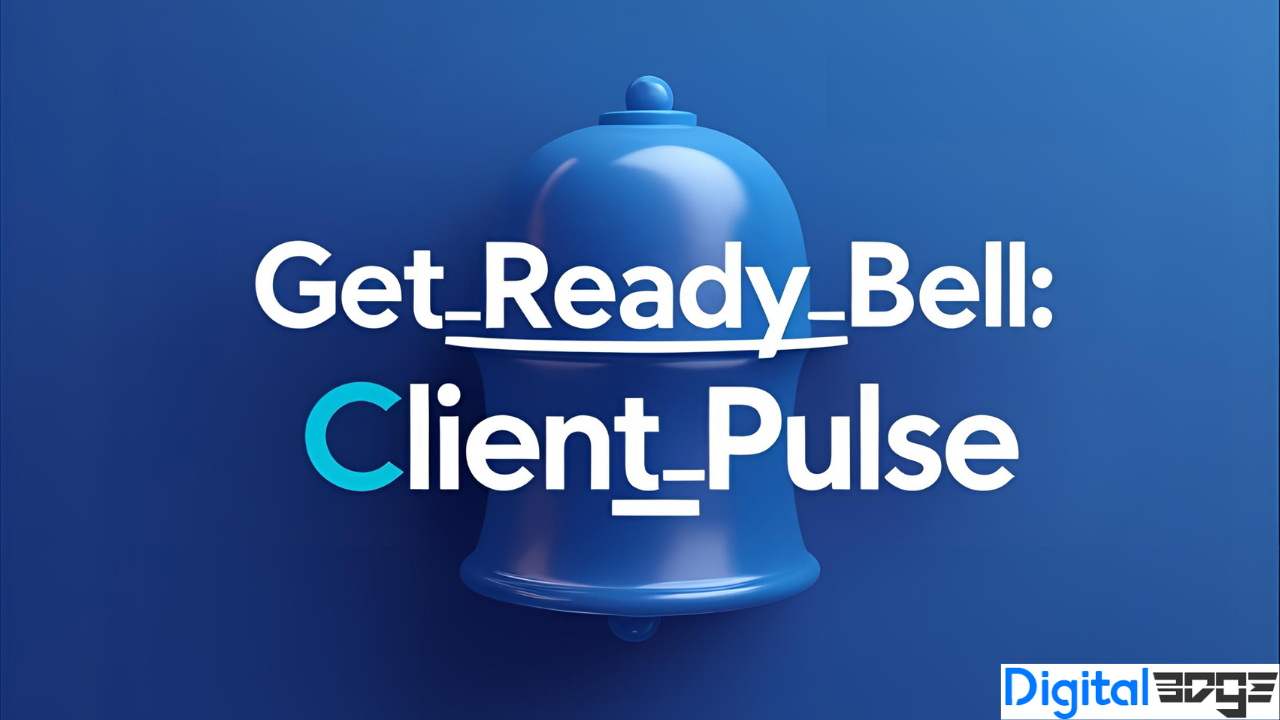In 2025, get_ready_bell:client_pulse is emerging as a key tool for tracking client readiness and engagement.
Found in SaaS, CRM, and workflow platforms, it acts as a real-time signal to monitor progress, trigger automated actions, and enhance customer experience, ensuring businesses stay proactive and responsive at every stage.
Breaking Down get_ready_bell:client_pulse
The term get_ready_bell:client_pulse is becoming increasingly popular in digital business tools.
It often appears in SaaS platforms, CRM dashboards, and analytics systems. This feature helps businesses track client readiness, engagement, and satisfaction in real time.
Essentially, get_ready_bell:client_pulse works as a signal or event in internal systems.
It monitors client status during key interactions like onboarding, product launches, or service activations. When triggered, it indicates that a “pulse” has been sent to assess where the client stands.
Why Businesses Rely on get_ready_bell:client_pulse
Modern companies need fast responses and smooth service delivery. get_ready_bell:client_pulse acts like a digital heartbeat, helping teams answer questions such as:
- Is the client prepared for the next step?
- Has the onboarding process finished?
- Are there hidden obstacles affecting progress?
- Is the client satisfied and engaged?
This event can automatically update CRM workflows, notify account managers, or adjust user experiences based on client status.
Common Platforms That Use get_ready_bell:client_pulse
You may encounter get_ready_bell:client_pulse in tools like:
| Platform Type | Example Use Case |
| SaaS onboarding dashboards | Track client completion of setup tasks |
| Support or DevOps monitoring | Alert teams on readiness milestones |
| CRM software | Update client status in Salesforce, HubSpot |
| Client success platforms | Measure engagement and satisfaction |
| AI workflow tools | Trigger automated workflows based on client actions |
For instance, when a client completes all onboarding steps, a get_ready_bell:client_pulse event notifies teams that the client is ready for the next phase.
How get_ready_bell:client_pulse Gets Triggered
Technically, get_ready_bell:client_pulse can be fired by scripts, bots, or API webhooks. Typical triggers include:
- Completing a task or form
- Hitting a login or usage milestone
- Passing integration or configuration checks
- Scheduled reviews of client progress
Once triggered, it can update databases, modify workflows, or inform support teams about client readiness.
Why get_ready_bell:client_pulse Adds Value
Adding get_ready_bell:client_pulse to operations provides several advantages:
- Instant Insights: Teams know immediately where clients stand.
- Faster Responses: Support or account teams can act quickly.
- Lower Drop-Off Rates: Disengaged clients are identified early.
- Enhanced Automation: Triggers can launch surveys, enable accounts, or start billing processes.
Enhancing Customer Experience with get_ready_bell:client_pulse
Timing matters in customer success. Using get_ready_bell:client_pulse ensures critical moments aren’t missed. It is especially useful during:
- Onboarding processes
- Training sessions
- Renewals or upsells
- Feedback collection
This system signal helps strengthen loyalty by keeping teams in sync with user progress.
Security and Compliance
For industries like finance, healthcare, or legal tech, protecting client data is vital. Ensure that get_ready_bell:client_pulse events:
- Avoid exposing personal information
- Are encrypted and securely logged
- Meet regulations like GDPR or HIPAA
Audit trails can also help when these events are tied to contracts or service delivery.
Example: How Teams Use get_ready_bell:client_pulse
A software firm onboarding a new client might use get_ready_bell:client_pulse like this:
- Client completes training modules.
- Integrations pass system checks.
- Account manager marks client as ready.
- get_ready_bell:client_pulse is triggered.
- Internal notifications are sent, and CRM is updated.
- Marketing receives the signal for welcome campaigns.
This coordination reduces errors and improves client satisfaction.
How to Add get_ready_bell:client_pulse
To implement get_ready_bell:client_pulse:
- Identify key trigger points
- Use webhooks or API calls for firing events
- Log events securely
- Connect to automation platforms
- Track outcomes via dashboards
Platforms like Segment, Mixpanel, or Datadog can provide analytics for deeper insights.
Conclusion
get_ready_bell:client_pulse is more than a system message. It is a real-time indicator of client readiness and engagement.
By integrating it into workflows, companies can react faster, reduce churn, and deliver a more proactive customer experience.
As digital tools evolve in 2025, expect get_ready_bell:client_pulse to become a standard feature in client management platforms.

